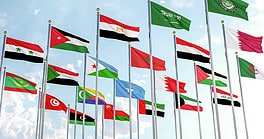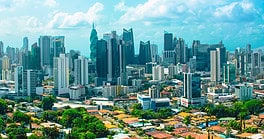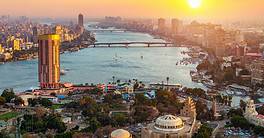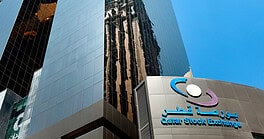Investing in Myanmar requires reconciling great opportunities and great risks.
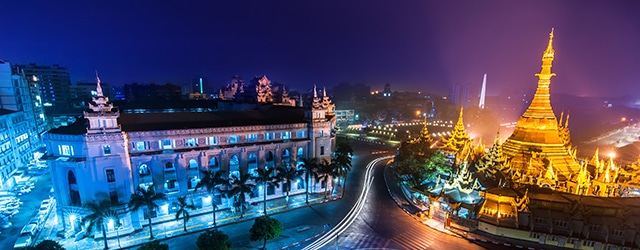
|
MYANMAR: VITAL STATISTICS |
|---|
|
Location: Southeast Asia |
|
Neighbors: Bangladesh, India, China, Laos, Thailand |
|
Capital city: Naypyidaw |
|
Population (2018): 53,909,691 |
|
Official language: Burmese |
|
GDP per capita (2017): US$1,299 |
|
GDP growth (2017): 6.7% |
|
Inflation (2017):5.1% |
|
Currency: Kyat (the US dollar is often used as an alternative currency) |
|
Investment promotion agency: The Directorate for Investment and Company Administration |
|
Investment incentives available? Tax breaks—amount may vary by region |
|
Ease of Doing Business rank (2018): 171 (out of 190) |
|
Corruption Perceptions Index rank (2017): 130 (out of 180) |
|
Political risks: General political instability |
|
Security risks: Little risk outside of troubled areas, great risk within them |
|
PROS |
|---|
|
Strong financial support in the form of loans from the World Bank, the Republic of Korea, and France |
|
Strong growth expected for the next two years |
|
Not restrictions on repatration of capital and profits |
|
CONS |
|---|
|
Huge humanitarian crisis |
|
Lack of promotion and high costs restrict growth in tourism sector |
|
High economic risk and financial-system risk |
|
Declining freedom of the press |
|
Sources: Asia Times, Asian Development Bank, Best’s Country Risk Report—Myanmar, International Monetary Fund, Myanmar Times, Reuters, Transparency International, United States Institute of Peace, US State Department, World Bank, World Population Review |
|
For more information, check out Global Finance‘s Myanmar Economic Report data page. |
Myanmar is a puzzle for global investors, who must fit together its promise as a large, newly opening market and its deadly ethnic strife and colossal bureaucratic snarls.
“It’s a country with a great many opportunities, because a lot of products that are available in other parts of the world are not yet available in Myanmar,” notes Andrew Bauer, a consultant with the Natural Resource Governance Institute and an adviser to the government. “You’re also very close to some of the world’s biggest markets: one quick ship ride to India.” Myanmar’s nearly 54 million residents also share a border with China.
Leaders are working to improve the environment for foreign direct investment (FDI), according to Shawlin Chaw, senior analyst, Asia-Pacific, at Control Risks. “The country is liberalizing,” she says. “It’s opening up its service sectors and some of its industries and commodities.”
Myanmar offers a long list of FDI prospects: Real estate, retail (including shopping malls), minerals, textiles, conventional electricity and renewable energy, natural resources and infrastructure are among the potential targets. “You name the sector, and there’s an opportunity there,” Bauer says. Off limits, however, are sectors controlled by state-owned enterprises, including oil and gas, or controlled by the military, such as gems. “You don’t want to go up against the military,” Bauer cautions.
Still, liberalization continues. A new Myanmar Companies Law went into force in August, allowing foreign investment of up to 35% in domestic companies, according to the US State Department, and the government has “routinely granted numerous exceptions.” The IMF puts GDP growth at 6.7% in 2017, and projects steady growth for two more years.
Yet hurdles remain: high transportation costs, corruption, an inefficient bureaucracy, red tape and lack of regulatory clarity. “It is a difficult market to work, due to numerous regulations that are not clearly defined,” Chaw says. Government administration is weak, with little communication among ministries.
Myanmar in 2015 held its first openly contested civilian-oriented general election since 1990, so the new heads of key ministries and other important decision-makers are inexperienced. “There is confusion about how things should be done at the top,” Chaw says. “Some of the ministers don’t quite know how to run the country, because they have never been placed in those positions before.”
Take U Kyaw Win, minister of planning and finance, for example. A corruption investigation, along with the revelation that his finance Ph.D. was a fake, led to his resignation in May, though he was cleared of the corruption charges the following month.
Myanmar’s other problems include a troubling humanitarian crisis in Rakhine State. Estimates of the number of Rohingya fleeing the country reach above half a million. In the past 12 months, ethnic strife has ripped through three other states—Kachin, Shan and Kayin—in spite of a ceasefire agreement signed in October 2015 and ongoing efforts to craft a lasting peace accord. The rest of the country, including Yangon, Mandalay and the capital, Naypyidaw, is generally safe and peaceful.
In sum, one shouldn’t expect too much too soon. “There are many opportunities that Myanmar can offer, but they will not be realized in the short term,” Chaw says.
